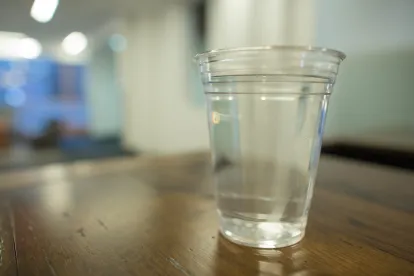On February 28, the D.C. Circuit in Center for Regulatory Reasonableness v. US EPA dismissed a challenge to statements made by the US EPA regarding two wastewater treatment techniques – blending and the use of mixing zones. US EPA previously prohibited these techniques in specified circumstances, and in 2013, the Eighth Circuit vacated these prohibitions in Iowa League of Cities v. US EPA. US EPA elected to not appeal the Eighth Circuit’s decision. The challengers argued that US EPA also attempted to limit the precedential effect of the decision by issuing statements that the decision applied only in states under the Eighth Circuit’s jurisdiction and by refusing to follow the decision elsewhere. The D.C. Circuit’s decision arguably allows the prohibitions on blending and mixing zones to stand in states other than those in the Eighth Circuit.
Eighth Circuit Rules Against US EPA on Procedure and Merits in Iowa League of Cities v. US EPA
As we covered previously here, the Eighth Circuit rejected US EPA’s bans of two wastewater treatment techniques. First, the court vacated the ban on mixing zones in primary contact recreation waters because the ban was effectively a legislative rule that failed to comply with procedural requirements. Mixing zones are limited areas of water where the water becomes diluted after being discharged and where water quality criteria can be exceeded as long as the water becomes diffused sufficiently as it moves through a larger body of water.
Second, the Eighth Circuit rejected the ban on blending peak wet weather flows because the ban suffers from the same procedural flaws as the mixing zone ban. Additionally, the court held that the ban regulated treatment processes within the treatment system, and therefore exceeded US EPA’s statutory authority to regulate at the end of the pipe only. Blending is a process that is used at many wastewater treatment works in response to large amounts of wastewater that overwhelm and inundate a treatment system. Blending occurs when treatment systems channel a portion of the wastewater around segments of the treatment process that become inundated, through an alternative treatment system, and then recombine that flow with the flow that traveled through standard treatment. This recombined flow is then discharged, and the blended flow must still comply with effluent limitations.
In the wake of the Eighth Circuit’s decision, US EPA decided to not appeal, and issued statements that the decision was binding only in the Eighth Circuit’s jurisdiction.
US EPA’s Prohibition Policies Persist in Some Jurisdictions after D.C. Circuit Ruling in Center for Regulatory Reasonableness v. US EPA
The Center for Regulatory Reasonableness, which represents municipalities and industrial facilities, challenged US EPA’s Statements. The group argued that the Statements were effectively rules, which (1) did not follow the required notice-and-comment procedures and (2) exceed the Agency’s statutory authority, and were therefore illegal and should be vacated.
The court rejected the challenge for jurisdictional reasons—under the Clean Water Act, a party seeking to challenge a rule can only challenge the rule directly in the courts of appeals under limited circumstances. 33 U.S.C. § 1369(b)(1). The court explained that the correspondence outlining US EPA’s position “does not announce an effluent or other limit on discharge of pollutants” but instead simply “articulates how EPA will interpret the Eighth Circuit’s decision.” Consequently, the court dismissed the challenge, finding that it should have been filed in district court.
The effect of the decision is that US EPA’s attempts to limit the decision to the Eighth Circuit have survived for the time being. Although this result is a victory for US EPA, it does not foreclose wastewater treatment systems from arguing against US EPA’s efforts to prohibit blending or mixing zones in future permitting actions. The D.C. Circuit did not approve of the legality of the prohibitions, instead focusing on whether the court had jurisdiction to consider an attack on the legality of US EPA’s Statements.
As a result, the D.C. Circuit’s decision in Center for Regulatory Reasonableness does not diminish the persuasive precedential value of the Eighth Circuit’s decision in Iowa League of Cities. Looking forward, wastewater treatment systems can still rely on the decision to argue that they should be permitted to use mixing zones for primary contact recreation waters and blending for peak wet weather flows.
Meanwhile, the Center for Regulatory Reasonableness has said that it plans to seek an en banc review of the D.C. Circuit’s ruling. A victory in the D.C. Circuit would be a profound win for wastewater treatment systems and would have far-reaching implications for what constitutes a challengeable agency action in other contexts.




 />i
/>i
